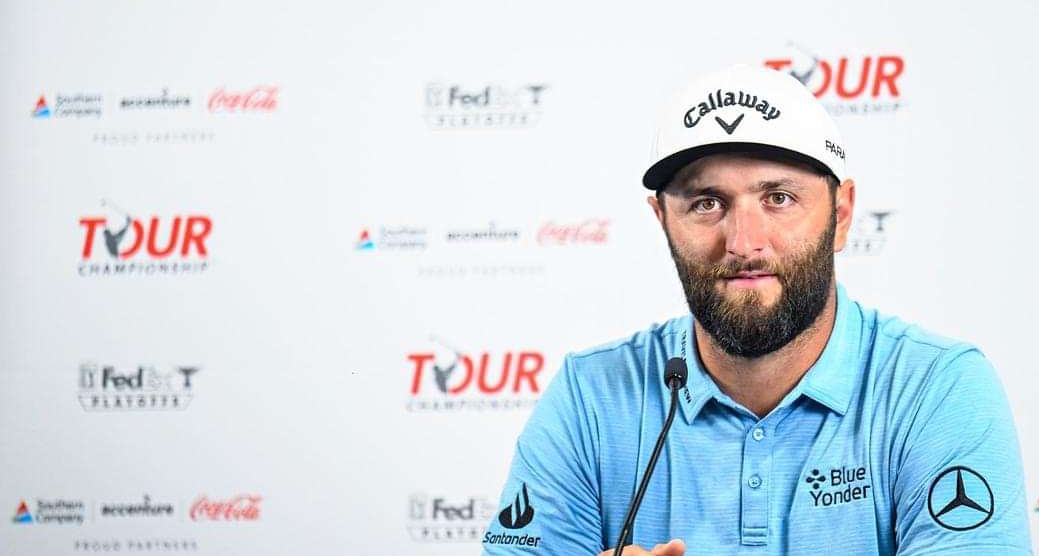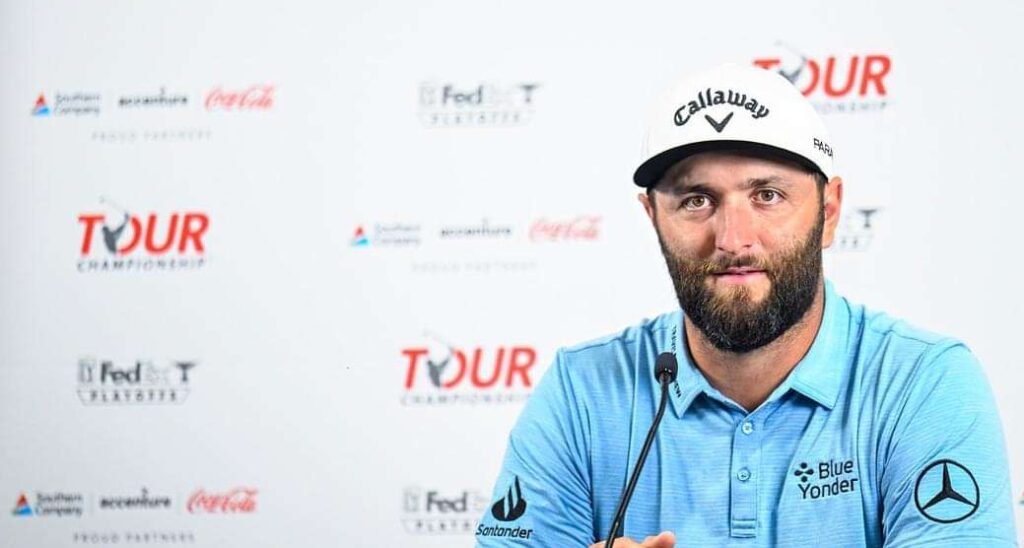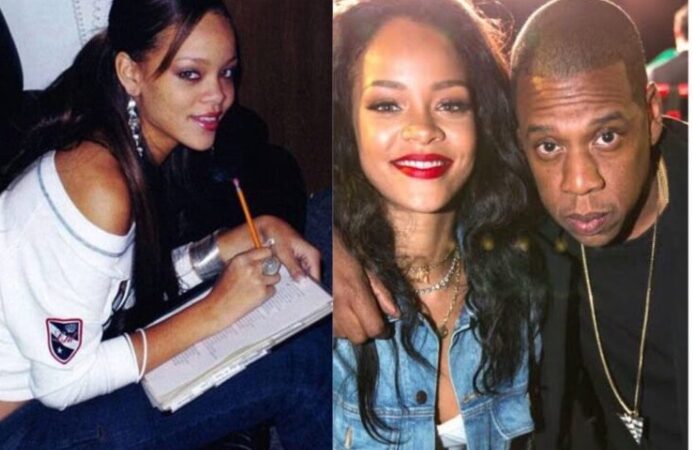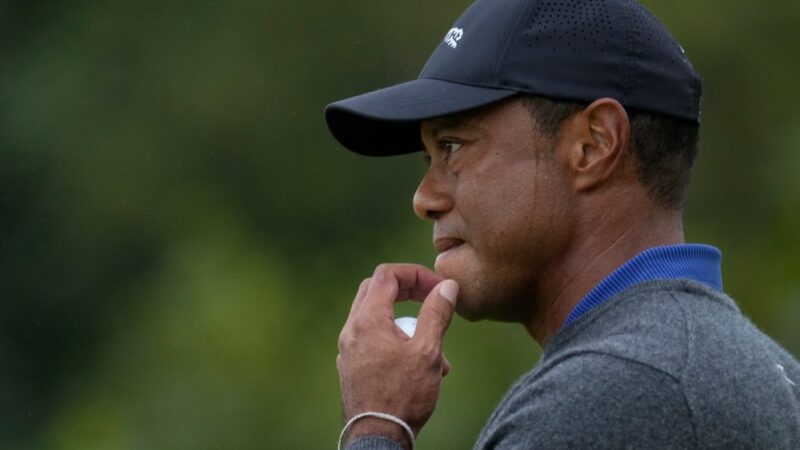One major uncertainty remains after Jon Rahm left LIV.


Jon Rahm was still very much Jon Rahm when I last saw him.
And being Jon Rahm looked awful on this particular Tuesday in August at the U.S. Open tennis competition.
When Rahm arrived at our place, he had already been interviewed by over six media outlets, gamely schmoozed with twenty corporate shills, and stood still for five seconds. Most remarkably, though, was that he didn’t appear any more worn out. Wearing pants and a bright blue button-down shirt, he spoke with an eager smile.
He was surprisingly unmoved by the spectacle of people bidding for his time, but he was far more interested in the women’s tennis quarterfinal match under us than almost anyone else in the luxury box we’d invaded at Arthur Ashe Stadium. He would interrupt his conversations to cram in quick analyses. Among the gregarious and affable individuals in the sport, Rahm, who is known for his fiery temper, appeared to be vying for the title of “most friendly.” I was in amazement.
But I learned the cost of it all a short while later, when Rahm came down to talk with me. While Connor, our video producer, was setting up our camera shot, I asked Rahm about his dinner plans. He held back.
“I’m not sure.”
Two days prior, the Tour Championship had concluded. He informed me that he had concluded his PGA Tour season and was flying directly to New York for the day’s availability, having spent eight months traveling nonstop. He had just a few hours left to repeat the entire scenario before boarding a plane to return to Scottsdale, where his wife Kelley and their two small children awaited.
Though it wouldn’t last long, it would be their first meaningful time spent together at home in a very long time. He was heading to the Ryder Cup in a few weeks, and then it was off to his home country of Spain for the Spanish Open, which concluded the DP World Tour season shortly after.
For a split second, Rahm acted out of character. I could sense the kind of fatigue in him that seemed to be ingrained in his bones.
Rahm eventually whirred back to life, and our cameras began to record. I questioned him about managing the weight of expectation after a short while. He smiled.
“Golf is a game. After five hours on the course, what is action? Every five to ten minutes, for no more than fifty seconds? ” he said. “You have to deal with your own thoughts a lot.”
Ah, to have been inside Jon Rahm’s thoughts that Thursday afternoon, the day that forever altered the meaning of “being Jon Rahm.”
During a hurriedly called press conference on Thursday, LIV Golf said that Rahm had signed a multi-year contract worth several hundred million dollars.
Weeks had passed since Rahm was allegedly involved with the rival circuit, but Thursday’s decision carried some finality. In an instant, the most talented golfer of our time had joined a circuit supported by the Saudi royal family and was supposedly just weeks away from reaching a settlement with his former employers. In the midst of his playing peak, Rahm changed his mind after “declaring” his “fealty” to the PGA Tour and after announcing for months that he would do the opposite. Despite his 21 professional victories and two major championships, his legacy will never be the same.
But Rahm personally has very little to do with the larger question—the one that will affect Rahm’s choice the most. Instead, it’s the query that prompted our private moment at the August U.S. Open, and it’s the one that all PGA Tour participants ought to be attempting to quickly find an answer to.
Why?
Rahm’s choice to attend LIV was definitely influenced by his financial situation. Every choice related to the competing league does, especially considering that the money thrown at him was supposedly well into the nine figures. If there are no more seismic changes to the golf scene, Rahm will continue to be the highest-paid player in the game for a very long time.
But other factors also had a role. It was not possible. To start with, he had already received a large paycheck—roughly $65 million in earnings as of right now. Furthermore, he had already informed us that he didn’t require it!
“After the initial incident, we began discussing it and asked ourselves, ‘Would our lifestyle change if I earned $400 million?’ No. It would not alter in the slightest, as Rahm strangely and memorably stated earlier this year. “To be honest, with the money I’ve earned, I could retire right now, lead a great life, and never play golf again.
I play golf because I enjoy it and I want to compete against the top players in the world, so I’ve never really played for financial benefit.
Rahm wouldn’t have been performing all that poorly on the PGA Tour even if he had been driven by money. In 2023, he earned the second-highest single-season salary in PGA Tour history, with only Scottie Scheffler’s $20 million season surpassing his $16.5 million in on-course earnings. Rahm and other high-ranking Tour officials are anticipated to earn significantly more in 2024 and beyond, with a “definitive agreement” with LIV’s existing Saudi funders providing a large portion of the revenue
who will give Tour players league shares for the first time and pour incalculable billions of dollars into the Tour concept. Rahm simply needed to wait if he needed or desired more money.
But maybe there was more to his desire to move to LIV than just money. After all, Rahm is one of the players who suffered consequences from the events of June 6, the day the Tour and PIF made their startling agreement public. With only 24 days remaining in the bargaining process, his departure at this point in the process is exceptionally harsh. Of course, it makes sense for the PIF, as it improves its bargaining position with the Tour and makes it apparent that LIV will impose fees forward if their talks fall apart. But for Rahm, the decision to leave his Tour counterparts in the lurch is at odds with everything he holds most dear: history and legacy; competition and reputation.
Rahm is a highly knowledgeable expert on the game, frequently drawing conclusions from decades-old competitions he observes in his own time. Leaving the PGA Tour disregards over 60 years of Tour history at what is arguably the Tour’s weakest point ever. It significantly devalues the Tour offering. That dashes his dreams of breaking many of the records held by his idol, Tiger Woods. One may argue that Rahm’s exit from LIV, along with his mentor Phil Mickelson, has had the greatest negative impact on the professional golf scene. Why then do it?
Maybe because LIV offers a legacy-building opportunity—becoming the face of a league, a household celebrity with whom the buck stops—that the PGA Tour never really seemed to be interested in. Maybe because Rahm was shown by the PGA Tour that money can change lives more than legacy mattered. Or maybe because getting a spot in the majors is the only thing that matters in these fractured times for professional golf.
Professional golfers lead gorgeous lives, but they also lead extremely demanding lives. The challenges of life on the road were great even before LIV. The golf schedule pushed players away from routine in favor of an endless road trip, tested marriage dynamics, and kept them apart from their families.
The opportunity to make millions and leave a legacy was the perk of doing it.
Although it is untrue, the notion that LIV’s schedule is essentially “easier” for players is hinted at. When stakeholders in golf are unable to reach a consensus on what matters, the incentives move toward the lowest common denominator. That’s money in this case, and guess who still possesses the majority of it?
A counterargument exists, stating that our ideals are more valuable than money. Rahm is going to hear it a lot in the upcoming months. His voice will be heard amid a deluge of doublespeak and hypocrisy.
He will be demonized and shunned, his name associated with terrorist acts and violations of human rights. When pressed to justify his actions, he will undoubtedly make an effort. But no matter how open and sincere he is, he will never be able to satisfactorily respond to the first and most fundamental question: why?
I couldn’t help but think back to that August afternoon at Arthur Ashe Stadium as Rahm’s future started to take shape late on Thursday. I considered the weariness in his eyes and the burden the past several months must have taken.
I pondered whether he was relieved. or agony.


